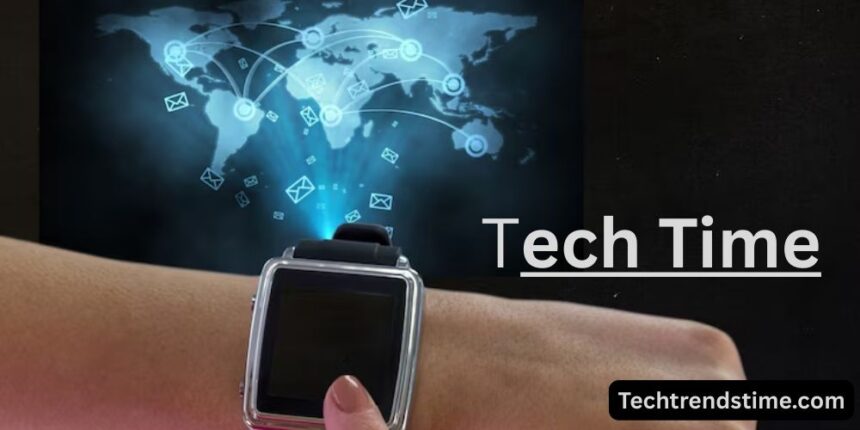“Tech Time” is more than just time spent on a gadget—it’s the symbol of our transition into a hyper-connected, digital-first society. It encompasses everything from how we communicate and shop to how we date, learn, and relax. Whether it’s checking your smart watch for updates or managing your finances through an app, Tech Time is embedded in nearly every decision we make. We live in a world where being offline feels like being invisible. Our daily schedules, productivity levels, and even emotions are influenced by our devices. The average adult spends nearly 7 hours a day interacting with digital screens—Tech Time has become lifestyle-defining.
Historical Perspective on Technology
Before smartphones and the internet, innovation was physical. The wheel, the printing press, electricity—these inventions transformed society over centuries. But things sped up drastically with the invention of the computer. The 1970s and 80s saw the rise of personal computers. Then came the internet in the 90s, shifting everything. Suddenly, information could be shared across the globe in seconds. The digital age officially began. The 2000s brought mobile internet, social media, and cloud computing. The playing field expanded. With just a phone, anyone could become a creator, influencer, or entrepreneur.
Living in a Digital World
Modern homes are intelligent. Your thermostat learns your habits, your lights turn on at dusk, and your fridge tells you when you’re out of milk. Smart homes are not just efficient—they’re tailored experiences built around your preferences. Thanks to smartphones and Wi-Fi, work can happen from anywhere—a café in Bali or your couch at home. This mobility has birthed a generation of digital nomads living off of laptops and time-zone math. Social media platforms aren’t just places to post selfies—they’re cultural engines. They influence fashion, politics, news, and even how we define identity and success. Hashtags start movements, and trends travel faster than ever. Remember going to video stores? Now, binge-watching is a way of life. Netflix, YouTube, and Spotify have made endless content accessible in seconds. Entertainment has never been more personal or on-demand.
Impact of Technology on Human Behavior
Technology alters how we think. Short-form content and instant feedback loops have reduced attention spans and increased our need for constant stimulation. Multitasking, once rare, is now expected. Why wait when you can click? Whether it’s shopping, messaging, or watching, gratification is immediate. This rewiring of reward centers in the brain has contributed to digital addiction, especially among youth. We’ve gained the ability to maintain long-distance relationships but lost the depth of face-to-face interaction. Social media often gives the illusion of closeness without emotional fulfillment.
Work and Productivity in the Tech Time Era
Machines now do more than repetitive tasks—they analyze, predict, and recommend. AI is transforming industries, from finance to manufacturing, by taking over data-heavy and time-consuming processes. Post-pandemic, remote work is no longer optional—it’s mainstream. Tools like Slack, Zoom, and Asana have turned bedrooms into boardrooms. This new model is more flexible but demands high self-discipline. Data analysts, app developers, cloud engineers, digital marketers—careers born from technology are booming. With every tech shift, a new job category opens up.
Learning in the Age of Technology
Traditional classrooms are transforming. Thanks to EdTech platforms, students now have access to AI-driven learning environments that adapt to their personal pace and learning style. Tools like Khan Academy, Duolingo, and Google Classroom are tailoring education like never before. Students who once struggled in rigid classroom setups can now thrive with bite-sized, interactive lessons that play to their strengths. Want to learn graphic design, Python, or public speaking? You don’t need a university—just an internet connection. Platforms like Coursera, Udemy, and Skillshare offer certifications that boost careers and open new paths. This shift is empowering people across the globe to upskill and re-skill, breaking down traditional educational barriers.
While the benefits are many, virtual learning isn’t perfect. Attention spans are shorter, technical issues are common, and students often feel isolated. Teachers have to double as tech support, and meaningful engagement is harder to achieve through a screen. Balancing innovation with connection remains a key challenge.
Health and Wellness in the Digital Era
Smartwatches and fitness bands aren’t just fashion—they’re personal health assistants. From tracking sleep patterns to measuring heart rates, these devices help users stay proactive about their wellness. Apps sync with medical records and alert users to abnormal patterns, bridging the gap between fitness and healthcare. Digital therapy platforms like BetterHelp and Calm have brought mental wellness to the forefront. Users now have access to guided meditations, therapy sessions, and cognitive behavioral tools on demand. In a fast-paced digital world, these apps offer a way to pause and recenter. Despite all these advancements, being constantly plugged in has drawbacks—eye strain, back pain, poor posture, and a sedentary lifestyle are on the rise. “Text neck” and “scroll fatigue” are becoming real health concerns, proving that wellness must be actively balanced with digital usage.
The Double-Edged Sword of Digital Life
With more time online comes increased vulnerability. Hackers, data breaches, ransomware—digital threats evolve as fast as the tech itself. Businesses and individuals alike must remain vigilant. Two-factor authentication, strong passwords, and digital literacy are the new shields. Anyone can be a publisher online—and that’s a double-edged sword. Fake news spreads fast and influences public opinion dangerously. It’s becoming essential to teach critical thinking and fact-checking as digital survival skills. Notifications, tabs, alerts—our brains are juggling constant input. This overstimulation can lead to decreased focus, burnout, and even anxiety. Many experts now advocate for “digital detox” days to reset and recover mental clarity.
Emerging Technologies Changing the Game
From Alexa answering questions to self-driving cars learning traffic patterns, AI is no longer science fiction—it’s baked into daily life. AI is reshaping customer service, healthcare diagnostics, content creation, and much more, making things faster, smarter, and more predictive. Blockchain isn’t just about Bitcoin. It’s transforming supply chains, secure voting systems, and even digital identity verification. Its decentralized nature promises greater transparency and security in a range of industries. Quantum computing is still in its infancy, but it promises to process problems far beyond the scope of traditional computers. Imagine solving complex climate models or cracking medical mysteries in seconds. The future potential is enormous—and we’re just scratching the surface.
As tech advances, so does our responsibility to the planet. From solar innovations to biodegradable hardware, eco-conscious tech is on the rise. Companies like Tesla and startups in sustainable computing are proving that innovation and environmental care can go hand in hand.
Kids, Teens, and Tech Time
Children under 2? Minimal screen time. Teens? Balanced use with real-world interaction. The key is intentionality. Parents and educators must create healthy boundaries and set examples in their own tech use. Not all screen time is created equal. Using a tablet for math games or coding is different from watching prank videos for hours. Encouraging content that develops skills, curiosity, and creativity is essential. Teaching kids to be safe, respectful, and smart online is just as important as teaching them to cross the road. Understanding cyberbullying, privacy, and online etiquette is now a core life skill.
Digital Minimalism and Conscious Consumption
Constant scrolling, notifications, and updates leave many feeling mentally drained. This “tech fatigue” is a form of burnout caused by digital overload, pushing people to reevaluate their screen habits. Digital minimalism doesn’t mean ditching your phone. It’s about using it intentionally. Turning off unnecessary notifications, setting app timers, and carving out tech-free zones in your home can make a big difference. Ironically, some of the best solutions to tech overload are more tech. Apps like Forest, Notion, and Freedom help users track their time, stay focused, and reduce mindless scrolling.
Global Inequality in Tech Access
While many enjoy seamless internet and devices, millions still lack basic access. Rural areas, developing nations, and underserved communities face a growing gap in digital resources. Efforts from NGOs, governments, and companies like Google and Facebook aim to expand access through satellite internet, mobile networks, and affordable hardware. Bridging this gap is critical for global progress. Digital inequality impacts education, employment, and healthcare. Ensuring equitable access isn’t just good policy—it’s a human rights issue in the 21st century.
Ethical Considerations in the Tech Age
Every click leaves a trail. From shopping to browsing, companies collect immense data. But are users truly informed? Transparent privacy policies and stronger regulations are urgently needed. Algorithms learn from data—but that data often reflects human bias. Without oversight, AI systems can reinforce discrimination. Ethical AI means responsible data use, diverse teams, and inclusive design. Big Tech holds power like never before. With that comes responsibility—to protect user rights, foster ethical innovation, and minimize harm. Consumers are demanding accountability, and the tide is turning.
Preparing for the Future of Tech
In a tech-driven world, digital literacy is as fundamental as reading and writing. Understanding how technology works—and how it affects our lives—is essential for informed citizenship and success. Coding, data analysis, digital marketing, and cyber literacy are becoming core skills. But so are soft skills like adaptability, critical thinking, and creativity—the human edge in a tech-saturated job market. The pace of change means no skill stays relevant forever. Lifelong learning isn’t a luxury—it’s a necessity. Embracing curiosity and continuous improvement will define success in the Tech Time age.
FAQs About tech time
What is Tech Time and why is it important?
Tech Time refers to the increasing role of technology in every facet of our lives—from communication and work to entertainment and health. It’s essential because it reflects how society is evolving and how we must adapt.
How has technology changed education permanently?
With online courses, EdTech platforms, and virtual classrooms, learning has become more accessible, personalized, and flexible—breaking the boundaries of traditional education.
What are the most innovative techtrendstime today?
Some leading trends include AI integration, blockchain beyond crypto, quantum computing, wearable health tech, and sustainable green technology.
Can we really balance tech and wellness?
Yes, by practicing digital minimalism, using mindful apps, taking breaks, and setting healthy boundaries, we can create a balanced digital lifestyle.
What should future generations know about digital ethics?
They should understand privacy rights, data usage, AI fairness, and the importance of critical thinking in the age of misinformation and digital power.
Conclusion
Welcome to Tech Time—a world where innovation never sleeps and opportunity is just a click away. But with this digital gold rush comes great responsibility. To thrive, we must balance convenience with consciousness, speed with safety, and innovation with intention. The future isn’t just coming—it’s uploading.


